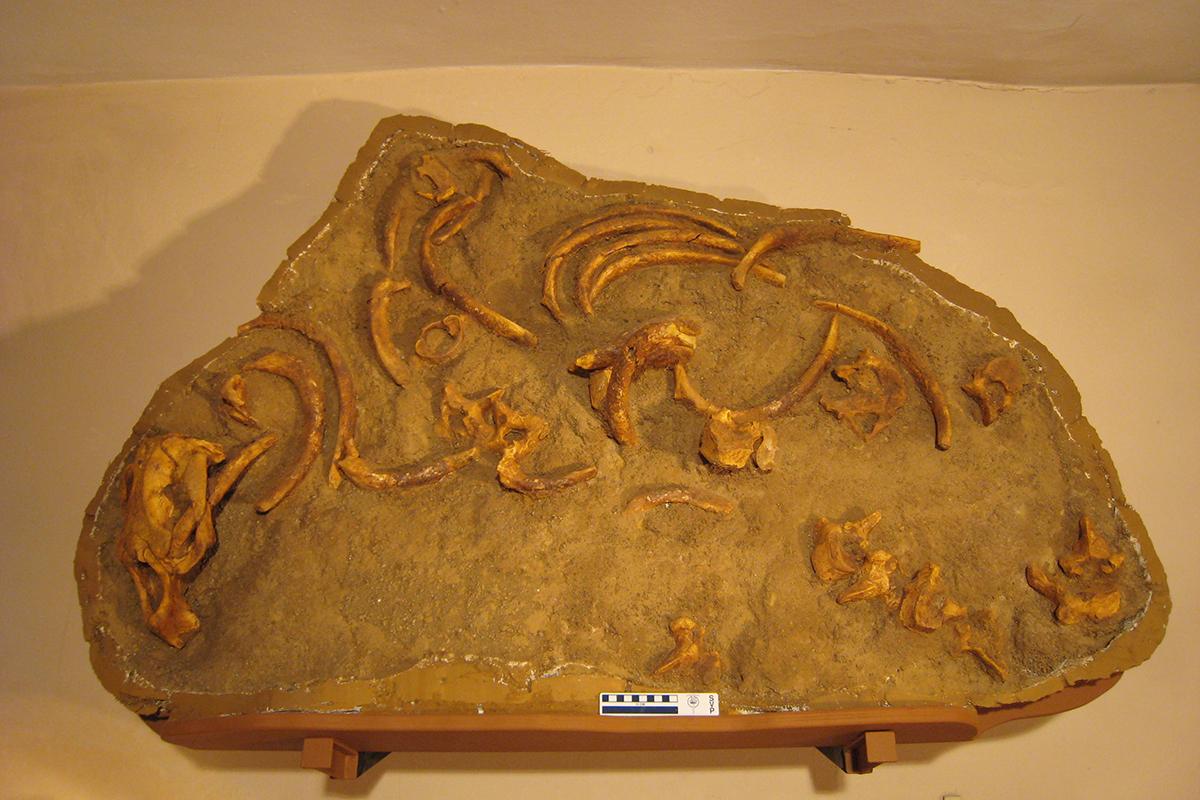The vertebrate palaeontologist Manja Voss and her colleague Oliver Hampe from the Museum für Naturkunde Berlin discovered two species of fossil sea cows in about 30 Million years old sediments of the Mainz Basin. The two newly described species differ from all other hitherto known sea cows and therefore form a separate group, which is indicated by the genus name Kaupitherium.
During the rise of the Alps in the Oligocene, about 30 Million years ago, a shallow sea covered large parts of today’s Germany; the North Sea extended to the Lower Rhine and the German low mountain range, and the precursor of the Mediterranean, the Paratethys, extended up to Munich. An approximately 300 km long and 40 km broad connected the North Sea and Paratethys and cities like Basel, Kassel, Mainz and Frankfurt a.M. have been formed shallow, sand- and clay-filled basins. Due to the excellent preservation of fossil sharks, rays and sea cows especially in the Mainz Basin, the so called “Mainz Sea Sands” became widely popular.
Sea cows represent a particular group of mammals, because they are fully adapted to a life in water and follow a strictly herbivorous diet. Extant representatives, also known as manatees and dugongs, inhabit the coastal areas and rivers of the tropics and subtropics. Therefore, it is something special to find sea cows in the Mainz Basin and surrounding areas, because they indicate that the climate in Germany was much warmer 30 Million years ago.
The first remains of a sea cow, a single tooth, was already found in 1838 and described as Halitherium schinzii. Since then, a number of specimens were recovered from the same deposits, amongst others complete skeletons, and some of which were described as different sea cow species. These species were never considered valid and hence the presence of a single species was assumed up to now. However, observations of skeletal differences repeatedly caused confusion raising the question on how many sea cow species actually lived in the former Oligocene Sea of Central Germany.
The vertebrate palaeontologist Manja Voss and her colleague Oliver Hampe, both from Berlin, took up this issue and finally distinguished two species in total. How can it be explained that two different species shared the same habitat and the same food to the same time? Actually, this is not unlikely and occurs relatively often amongst today’s living organisms. The comparison of skeletons representing the two sea cow species shows fundamental differences in the development of the occiput and in the dentition. These features are most likely related to different life styles indicating that both species shared their food, mainly seagrass, in different ways. Additionally, it is widely accepted that seagrasses were much more diverse in the remote past than today and hence it is possible that the two different sea cows were specialised on certain plants preventing competitive conflicts.
Both scientists could also explore that none of the Oligocene sea cows belong to the genus Halitherium. This name is only restricted to the single tooth, which made the material basis for the establishment of the genus, because it was not possible to unambiguously assign this tooth to any of the other hitherto known sea cow species. Furthermore, the two newly described species differ from all other known sea cows in so far that they form a separate group. Hence, a new genus name was needed and is now a combination of the latinised name honouring Prof. J.J. Kaup and the greek term for animal: Kaupitherium.
Some of the sea cow fossils can be seen in the exhibitions of the natural history museums of Mainz, Frankfurt a.M. and Darmstadt, for example.
Publication:
Voss, M. & Hampe, O. 2017. Evidence for two sympatric sirenian species (Mammalia, Tethytheria) in the early Oligocene of Central Europe, Journal of Paleontology http://dx.doi.org/10.1017/jpa.2016.14
Picture for free publication in this context you can get here:
http://download.naturkundemuseum-berlin.de/presse/Kaupitherium
Image: 1: The skeleton of Kaupitherium gruelli, which is the basis for the name of that new species as well as for the new genus. It is stored in the Staatlichen Naturwissenschaftlichen Sammlungen Bayerns - Bayerische Staatssammlung für Paläontologie und Geologie under the inventory number BSPG 1956 I 540. The skeleton measures about 2.50 m and of it the skull, lower jaw, vertebral column as well as the ribs and the innominate bone from the left side are nearly completely preserved.
Image 2: A partial skeleton of Kaupitherium gruelli in find situation: besides the nearly complete skull, vertebrae and ribs are preserved. Photo: M. Voss
Image 3: A representative of the fork-tailed sea cow also known as dugong, which lives today in the Indo Pacific region. http://www.animalpicturesociety.com
